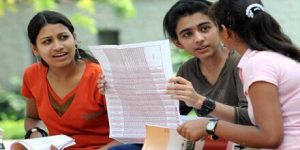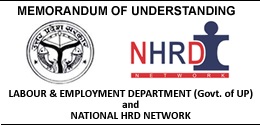📧 Email: info@rozgarsandeshabhiyan.org 📞 Call: 8447211451


Are You A Job Seeker ?







On the end of Second World War in 1945, for ordely absorption of the released service personnel and other war workers; The need for an organization to handle this complex problem in a uniform manner was and in July 1945 “Directorate general of Resettlement and Employment” was set up.A Training and Employment service organization committee (popularly known as Shiva Rao committee) was appointed in 1952, under the chairmanship of Shri B. Shiva Rao. Based on the recommendations of the committee, the day to day administration of the organization was handed over to the state governments with effect from 1st November 1956…..Read More

- Online Registration Anywhere Anytime.
- Private and Government Jobs On One Portal.
- Facility to Apply Online.
- Job Notification via Email.
- Search Jobs Through Using Filter Category,Place,Department And Salary.

- Lacs Of Jobseeker On One Click.
- 24*7 Facilities for Uploading Jobs.
- Facility of Particepation in job Fair.
- Online Registration Anywhere Anytime.
- Online return File Facility.

- Search of jobs according to location, salary and educational qualification.
- Sectorwise Search.
- Departmentwise Search.
- Postwise Search.

- To improve the Co-operation between the Department of Labour and Employment and National HRD Network.
- To Publicise Sewayojan Portal among the members of NHRDN.
- To Encourage the members of NHRDN to recruit through the Portal.
Why Choose Us
- Comprehensive Coverage: We cover job openings in various government sectors, including Central and State Governments, Public Sector Undertakings (PSUs), and more.
Verified Information: Our team meticulously verifies every job notification to ensure accuracy and reliability.
Accessible Platform: Our website is designed to be user-friendly, catering to job seekers of all skill levels.
Expert Guidance: From exam preparation tips to interview strategies, our experts provide valuable insights to enhance your chances of success.
What We Offer
- Timely Notifications: Receive instant updates on the latest government job openings across various sectors, including Railways, Banking, Defense, Education, and more.
- Simplified Application Process: Our user-friendly platform guides you through every step, from discovering job opportunities to submitting applications.
- Preparation Resources: Access study materials, mock tests, and expert tips to enhance your preparation for competitive exams.
- Community Support: Connect with fellow aspirants and share insights, tips, and motivation to achieve your goals.



















Infrastructure Development for Economic Growth
India is at the cusp of a growth cycle and on track to become the fourth largest economy in the world with an ambition to reach $5 trillion in few years. It is also expected to be the third largest construction market by this year, 2022. The latest report said investor confidence is strong in infrastructure sector, supported by favorable long-term financing conditions, recovery stimulus packages and overseas investment in terms of FDI inflows. In FY21, infrastructure activities accounted for 13% share of the total FDI inflows of US$ 81.72 billion. India will require investments worth INR 50 trillion across infrastructure segment for sustainable development in the country.
In the Union Budget 2022-23, the government has given a massive push to the infrastructure sector under Prime Minister Gati Shakti scheme that has received its first ever outlay of INR 20,000 Crore. The scheme envisage for integrated planning and coordinated project execution with sustained monitoring of projects consisting of several ministries incorporating all government approach under one umbrella while focusing on multimodal connectivity being the key aspect of India’s economic progress.
Emphasizing the importance of investment for creating modern infrastructure, seven engines of growth has been identified – roads, railways, ports, airports, mass transport, waterways, and logistics infrastructure. The Budget aims to construct 25000 kilometres of National Highways in 2022-23, almost double of the previous year with the highest ever budget allocation of INR 1,18,101 Crores. The Additional INR 1,00,000 Crore interest free support to the states for implementation of Gati Shakti scheme and rural roads will accelerate the local economy.
Another significant announcement is the setup of 100 cargo terminals under the PM Gati Shakti. Transport and logistics infrastructure is a big constituent of the broader capital expenditure budget, estimated to be around 2.9 per cent of GDP. The announcement for manufacturing 400 new generations Vande Bharat trains by 2025 as part of the master plan will support the initiative of better energy efficiency and reducing carbon footprints while giving people a better riding experience. As part of Atmanirbhar Bharat plan, 2000 kilometers of railway network will be brought under Kavach, the indigenous world-class technology for safety and capacity augmentation in FY22.
Apart from the dedicated Bharatmala, Sagarmala, inland waterways and UDAN scheme, the Finance Minister also announced the Parvatmala; a national ropeways development programme that is being positioned as a sustainable alternative to conventional roads in difficult hilly areas. The government plans to award contracts for eight ropeway projects for a length of 60 kilometers this year.
Along with logistics efficiency, huge investment in creating drinking water infrastructure, irrigation and river-interlinking, sewerage and social infrastructure with clean energy have been the highlight of the budget. There is a growing recognition about the need of proper water management with adequate infrastructure development to propel economic growth and the initiative under the Jal Jeevan Mission is a clear indication that Government of India is looking for holistic and sustainable approach.
The budgetary allocation for water infrastructure development is an evidence of India moving forward with a conviction to resolve water issues and to modernize water distribution system. The fund of INR 44,605 Crore allocated for the Ken-Betwa river linking project will help to provide drinking water facilities to 62 lakh people and better irrigation to 9 lakh hectares while supporting clean energy generation of 103 MW hydro power and 27 MW solar power. At SPML Infra, we know that the project will bring a big difference in people’s lives and agriculture yields as we have been part of the progress of such a large project in Gujarat called as Saurashtra-Narmada Avataran Irrigation Yojana (Sauni Yojana), which is quite successful in its target.
The allocation under Swachh Bharat Mission (Rural) of ?9,994 Crore and ?2,300 Crore for Urban, AMRUT Scheme with ?7,300 Crore, National Mission for Clean Ganga for ?600 Crore, Major & Minor Irrigation Projects of ?4,904 Crore along with other urban infrastructure development projects will certainly be a game changer in the water sector in India. The linking of five rivers including Damanganga-Pinja, Krishna-Godavri, Krishna-Pennar, Pennar-Cauvery, Par Tapi- Narmada is going to have a long term impact on water sustainability initiatives in the proposed regions.
National Rural Livelihood Mission
The National Rural Livelihoods Mission was launched in June 2011 with the goal of developing institutional platforms for the rural poor to increase household incomes through livelihood support and access to financial services. This brief assesses the program’s accomplishments in its first ten years. It discovers that the Mission has had some success in improving the lives of rural women, who are the program’s backbone, and, as a result, their families. These accomplishments are primarily in the areas of social capital development, community mobilisation, and some degree of access to finance. Today, the Mission must shift its focus to livelihoods, particularly in light of the massive economic fallout from the COVID-19 pandemic.
Integrated Rural Development Program
The Integrated Rural Development Program was established to provide poor people with employment opportunities. This scheme not only provides the necessary subsidies to people living below the poverty line, but it also assists them in improving their living conditions. The Government of India launched the Integrated Rural Development Program (IRDP) in 1978 and implemented it in 1980. The program’s goal is to provide poor people with employment opportunities as well as opportunities to develop their skill sets in order to improve their living conditions. The programme is regarded as one of the best yojanas for addressing poverty-related issues by providing necessary subsidies in tandem with job opportunities to those who fall below the poverty line.
Conclusion
A number of rural development programmes are being implemented to create opportunities for improving the quality of life of these rural people in order to address specific problems. Rural development programmes aim to reduce poverty and unemployment, improve health and education, and meet rural residents’ basic needs, such as food, shelter, and clothing. The Mahatma Gandhi National Rural Employment Guarantee Act , the Rozgar Sandesh Abhiyan, the Indira Awas Yojana , the Rozgar Sandesh Abhiyan, the Integrated Tribal Development Project , and the Rozgar Sandesh Abhiyan through the Planning Commission of India to improve rural people’s conditions. All of these schemes aim to close the gap between rural and urban people, thereby reducing imbalances and speeding up the development process.














Feel free to contact us anytime. We look forward to hearing from you